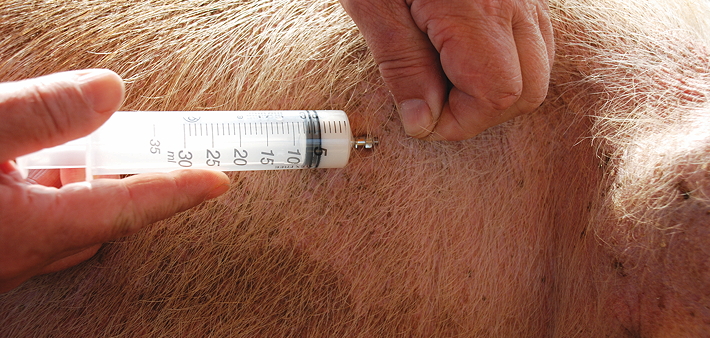Gemma Thwaites is a director at Garth Pig Practice Ltd. She is involved in advisory work and all aspects of investigations on farm and has a particular interest in improving health on farm and disease eradication plans
The half-price kitchen adverts of the new year have the predictable effect of at least making me look around our existing kitchen and imagining how it could be.
This got me thinking about the amount spent on our white goods. Usually we upgrade because they are broken, so the old ones often end up on the pig unit storing vaccines and various veterinary medicines.
Our industry is making great progress in reducing antimicrobial use and prevention of disease by vaccination is vital to this change. The use of farm-specific autogenous vaccines is also increasing. This, combined with the general trend of increasing unit size, means that the unit refrigerator is now storing products of a very significant value.
Livestock vaccines usually have a recommended storage temperature of between 2°C and 8°C. Research has shown the negative effect of temperature fluctuation on human vaccinations and, although less work has been done on livestock vaccines, research also shows the importance of storage conditions to effectiveness.
We think of refrigerators keeping products cool, but in our UK climate, with temperatures often dropping to below 0°C, effective storage needs to be able to raise temperatures as well as lower them, something that domestic fridges cannot do.
Greater use of vaccines requires more fridge space and we see fridges overfilled with vaccine pushed against the back at risk of freezing.
In a recent article (Williams and Paixâo BMC Veterinary Research, 2018), temperature storage devices were put into various livestock fridges. The study concluded that the majority of the fridges tested would have failed to keep livestock vaccine within the recommended storage range. Temperatures achieved ranged from 24°C to -12°C.
Time and effort are then spent injecting pigs with a vaccine which may be less potent or even inactivate. This may not be discovered until later in the pig’s life – diseases such as Enzootic Pneumonia may occur, despite vaccination, if vaccines were not properly stored. It may be several months until clinical disease is seen and flags up a problem with the vaccine storage. Significant financial losses are incurred through wasted vaccination costs, labour, morbidity, mortality and medication costs.
A fridge should be invested in specifically. Invest in a large enough unit to store all that is required easily with good air flow all round.
An internal temperature logger for continuous monitoring is ideal, but an internal maximum and minimum thermometer that is recorded daily is essential. This will pick up problems before they manifest themselves clinically in the pigs. The cold chain supply of a vaccine is critical from manufacturer to wholesaler to veterinary surgeon.
Remember, it does not stop until the point it is administered.




